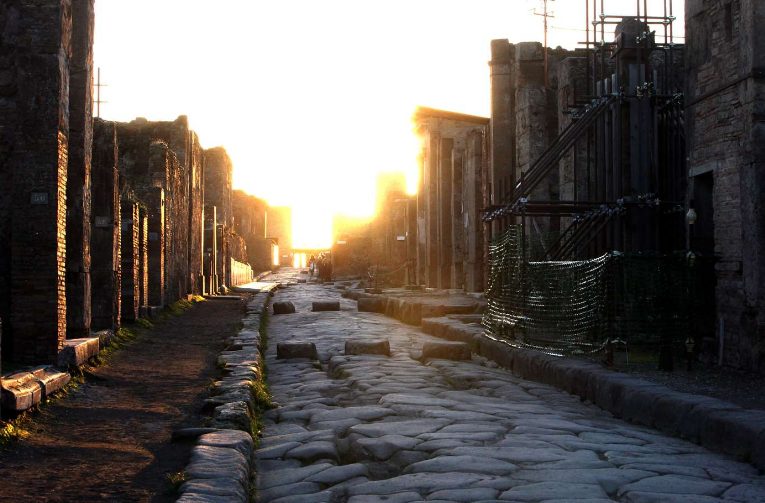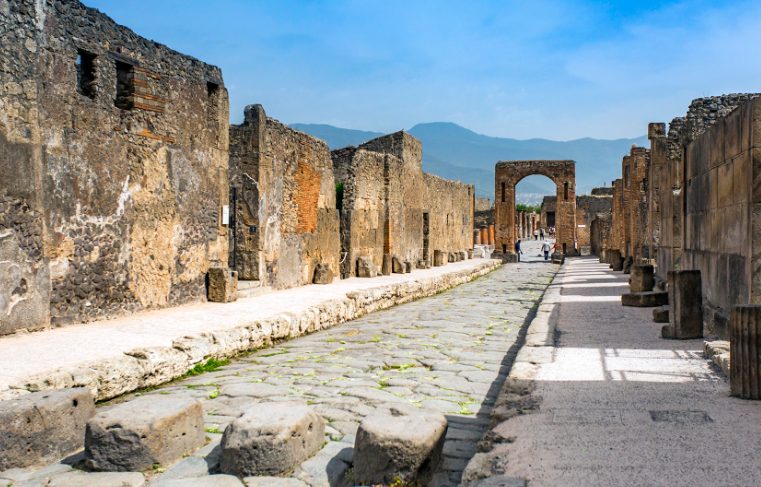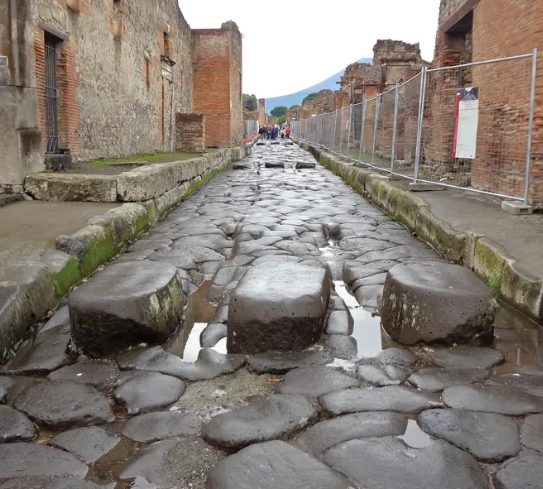The Ancient Street of Pompeii – A Glimpse into the Past

The ancient city of Pompeii, nestled near the tranquil bay of Naples, Italy, was once a bustling metropolis of Roman culture, commerce, and everyday life. However, on that fateful day in 79 AD, everything changed as Mount Vesuvius unleashed its catastrophic eruption, shrouding the city in a deadly cascade of volcanic ash and pumice. Yet, in this tragic moment, history left an indelible mark as Pompeii’s ruins were preserved for millennia, becoming an archaeological treasure trove.
Among the many remarkable features of this ancient city is the evocative “Via dei Sepolcri,” better known as the “Street of Tombs.” This cobblestone-lined road has withstood the test of time and serves as a time capsule, offering a poignant glimpse into the burial customs and daily life of its ancient inhabitants.

The Street of Tombs, so named due to the numerous tombs and funerary monuments that once adorned its sides, was not merely a thoroughfare but a testament to the profound reverence the ancient Romans had for their departed loved ones. These tombs, constructed in the centuries preceding the eruption, showcased elaborate frescoes and inscriptions, providing intimate glimpses into the lives of those laid to rest. Diverse architectural styles adorned the tombs, reflecting the various backgrounds and socio-economic statuses of the people of Pompeii.
As visitors walk along this historical street, they become time travelers, stepping into the footsteps of those who walked the same path thousands of years ago. The Street of Tombs offers a poignant reminder of the fleeting nature of human existence and the significance the ancient Romans placed on honoring their ancestors.

Today, the archaeological site of Pompeii stands as a testimony to the resilience of history. Careful preservation efforts have allowed generations of archaeologists and visitors alike to unearth valuable insights into the lives of Pompeii’s former inhabitants. However, the delicate balance between granting access to the public and preserving the site remains a challenge, as the protection of these precious historical remnants is of utmost importance.
The street’s allure remains intact, inviting visitors to immerse themselves in the rich history of ancient Rome. Its significance as a testament to the fragility and resilience of human history is a reminder that, even after millennia, the past continues to have a profound impact on the present.
In conclusion, the ancient Street of Tombs in Pompeii offers an unparalleled journey into the lives and customs of an ancient civilization. As visitors traverse the cobbled paths, they embark on a profound and reflective experience, fostering a connection with the past that endures through the ages. The preservation and study of this archaeological site will continue to be crucial in preserving the legacy of Pompeii and the captivating story it has to tell.